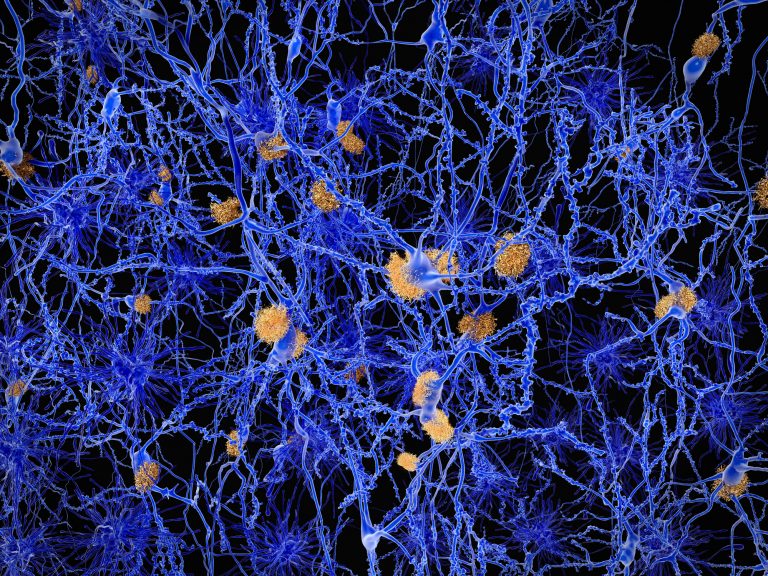
An international team of researchers has identified a rare mutation in the APOE3 gene of one patient with Alzheimer’s disease, which could help to explain why some people are more resistant to the neurodegenerative disease than others. The findings could also potentially lead to new strategies for delaying or even preventing Alzheimer’s disease, suggested the investigators, who are headed by a team at Massachusetts General Hospital (MGH), in collaboration with the University of Antioquia, Schepens Eye Research Institute of Massachusetts Eye and Ear, and Banner Alzheimer’s Institute.
“This study underscores the importance of APOE in the development, treatment, and prevention of Alzheimer’s, not to mention the profound impact that even one research volunteer can have in the fight against this terrible disease,” said Eric M. Reiman, MD, executive director of Banner Alzheimer’s Institute and co-senior author of the study. “We hope that our findings galvanize and inform the discovery of APOE-related drug and gene therapies, such that we can put them to the test in treatment and prevention studies as soon as possible.” Reiman and colleagues reported their study in Nature Medicine, in a paper titled, “Resistance to autosomal dominant Alzheimer’s disease in an APOE3 Christchurch homozygote: a case report.”
Mutations in the PSEN1 gene, which encodes the presenilin-1 (PS1) protein, are the most common cause of familial Alzheimer’s disease (FAD), and mutation carriers tend to develop clinical signs when they are relatively young, typically in their forties. But this isn’t always the case. Some carriers of gene mutations that are known to cause early-onset Alzheimer’s disease don’t show signs of the condition until they are much older. Studying these individuals may uncover genetic variants that act to reduce the risk of developing Alzheimer’s disease and other forms of dementia, the authors noted. “Carriers of Alzheimer’s disease-causing mutations who remain cognitively unimpaired until older ages could help in the discovery of risk-reducing genes.”
In their study reported in Nature Medicine, Yakeel T. Quiroz, PhD, a clinical neuropsychologist and neuroimaging researcher at MGH, and her colleagues described one such patient, who is a member of a large extended family from Colombia that has more than 6,000 living members. The researchers identified about 1,200 individuals in the family who carried a PSEN1 mutation known as E280A. Although the age of clinical onset of Alzheimer’s disease in members of the family with this mutation does vary, PSEN1 E280A mutation carriers typically develop mild cognitive impairment (MCI) at about 44 years of age, and dementia at age 49 years.
However, the researchers found that this one individual who carried the PSEN1 E280A mutation carrier didn’t develop MCI until she was in her seventies, “nearly three decades after the typical age of onset.” They found that, unlike any of the other family members studied, she also carried two copies of an APOE3 gene variation called ChristChurch (APOE3ch), named after the New Zealand city where it was first identified. The team’s subsequent analyses did show that 6% of 117 kindred members of the Colombian family— including four PSEN1 E280A mutation carriers—had a single copy of the APOE3ch mutation, but these individuals showed signs of mild cognitive impairment at the expected average age of 45 years. It appeared that two copies of the APOE3ch variant were needed to afford protective against MCI onset. “We thus postulate that APOE3ch homozygosity is required to postpone the clinical onset of ADAD,” the researchers wrote.
Imaging studies of the patient who was homozygous for the APOE3ch variant showed that she had only minor neurodegeneration. Surprisingly, she did have unusually high brain levels of amyloid-β deposits, a hallmark of Alzheimer’s disease. In contrast, she also had relatively low levels of tau tangles, which are another hallmark of the disease. “Despite her high amyloid-β plaque burden, the magnitude and spatial extent of her PHF [paired helical filament] tau burden and neurodegeneration were relatively limited, particularly for her age,” the team wrote. “Our findings suggest that the resistance of this APOE3ch homozygote to the clinical onset of Alzheimer’s disease is mediated through a mechanism that limits tau pathology and neurodegeneration even in the face of high amyloid-β plaque burden.”
“This single case opens a new door for treatments of Alzheimer’s disease, based more on the resistance to Alzheimer’s pathology rather than on the cause of the disease,” Quiroz stated. “In other words, not necessarily focusing on reduction of pathology, as it has been done traditionally in the field, but instead promoting resistance even in the face of significant brain pathology.”
The APOE gene product, a protein called apolipoprotein E, is involved in the metabolism of fats in the body. APOE3 is one of three variants of the gene, which is the major susceptibility gene for late-onset Alzheimer’s disease. “Compared to the most common APOE3/3 genotype, which is considered neutral with regard to Alzheimer’s disease risk, APOE2 is associated with a lower risk of Alzheimer’s disease and older age at onset of dementia, and each additional copy of APOE4 is associated with a higher risk and younger age at onset,” the investigators explained.
Further experiments indicated that the APOE3ch variant may reduce the ability of apolipoprotein E to bind to heparan sulphate proteoglycans (HSPG), which have been implicated in processes involving amyloid-β and tau proteins. “This finding suggests that artificially modulating the binding of APOE to HSPG could have potential benefits for the treatment of Alzheimer’s disease, even in the context of high levels of amyloid pathology,” said co-lead author Joseph F. Arboleda-Velasquez, MD, PhD, of the Schepens Eye Research Institute of Mass Eye and Ear.
“Our findings have implications for the role of APOE in the pathogenesis, treatment, and prevention of Alzheimer’s disease,” the authors commented.” We postulate that interventions that safely and sufficiently edit APOE, lower its expression, or modulate its pathogenic functions relating to HSPG interactions could have a profound impact on the treatment and prevention of Alzheimer’s disease.”













